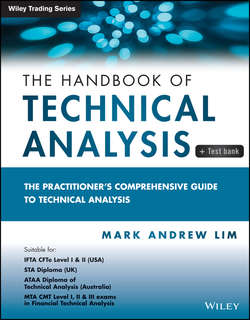Читать книгу The Handbook of Technical Analysis + Test Bank - Lim Mark Andrew - Страница 12
На сайте Литреса книга снята с продажи.
CHAPTER 1
Introduction to the Art and Science of Technical Analysis
1.1 MAIN OBJECTIVE OF TECHNICAL ANALYSIS
ОглавлениеIt is generally accepted that human beings are born with certain instincts, tempered and molded by evolution via the passing of time. Every human being strives and seeks to fulfill these powerful instinctive forces.
The three main motivational instincts are:
1. The instinct to survive
2. The instinct for comfort
3. The instinct to propagate
The instinct to survive is probably the strongest and most overpowering. Survival almost always precedes the need for comfort or to propagate the species. The instinct to survive includes:
• The instinct to stay alive
• The instinct to satisfy hunger
• The instinct to seek safety, that is, being in a group/herd
• The instinct to avoid danger (by having natural fears like the fear of fire, loud sounds, heights, etc.)
This powerful instinct to survive is the main driving force in life for striving to make a profit. But in order to make a profit to ensure continued survival, there must be a positive change in the actual or perceived value of something that we own. This change in value of some variable may be anything that will allow us to profit from change. One very popular and convenient variable of change is price. We can participate in this price change by satisfying a very simple mechanical rule that will ensure profitability every single time, which is to always buy when prices are low and sell when they are higher, popularly referred to as the buy low, sell high principle. See Figure 1.1.
Figure 1.1 The Mechanics of Profiting from a Change.
Unfortunately, in order to satisfy this simple rule of guaranteed profitability, we need to be able to do more of one thing, which is to be able to determine the direction of price ahead of time in order to know exactly when to buy low and subsequently sell higher. Hence, it is not only the mechanical action of buying low and selling high that counts, but also the timing of the action itself that is critical. This introduces an element of chance or probability into an otherwise fairly straightforward mechanical venture. Profitability therefore requires effective and efficient action in two dimensions, that is, price and time. Traders and analysts keep track of this action using a two-dimensional visualization tool, that is, a price-time chart, which tracks price on the vertical axis and time on horizontal axis.
In short, the ability to forecast or predict price or market action in a reasonably accurate fashion represents one of the skills that may be critical for longer-term success as a professional trader or analyst.
